Boiling Point: As California broils, Montana doubles down on coal
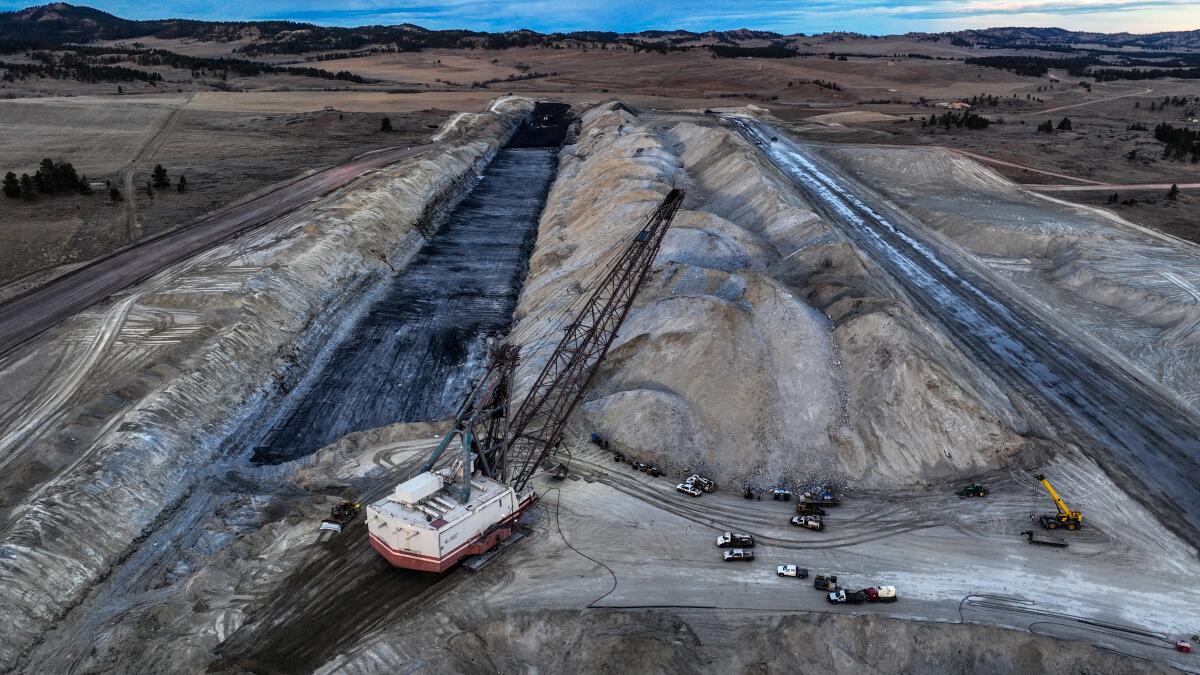
- Share via
Most of the country is phasing out coal power. Montana is trying something different.
The state’s largest electric utility, NorthWestern Energy, was already planning to acquire Washington-based Avista Corp.’s share of the coal-fired Colstrip power plant — to the relief of Avista, which under Washington law is required to phase out coal by 2025.
Last week, NorthWestern doubled down. The company announced it would bail out a second Washington utility, acquiring Puget Sound Energy’s ownership share in Colstrip at no cost. That will give NorthWestern majority ownership of the Montana coal plant, as Amanda Eggert reports for the Montana Free Press — a source of great joy for Gov. Greg Gianforte, who in a written statement called the announcement “yet another step in securing a strong future for Montana-made energy.”
You're reading Boiling Point
Sammy Roth gets you up to speed on climate change, energy and the environment. Sign up to get it in your inbox twice a week.
You may occasionally receive promotional content from the Los Angeles Times.
It would be easy for progressive Californians to dismiss fossil fuel-loving Montanans as silly and irrelevant.
But the reality is more complicated. As I wrote this spring after visiting Colstrip, coal burned in Montana pollutes the atmosphere we all share, helping fuel the ever-deadlier heat waves, wildfires and floods we’re experiencing here. And in the long run, building sustained political momentum for climate action will require support in conservative rural states. We’re all in this together.
That’s the long run. The short run, unfortunately, doesn’t look so harmonious.
The presidential election, now three months away, is a battle between former President Trump — who treats the climate crisis like a joke, bashes renewable energy and pledges allegiance to fossil fuel companies — and Vice President Kamala Harris, who embraced the Green New Deal as a senator and once called to ban fracking for oil and natural gas.
Harris no long supports a fracking ban. But she still won the endorsement of environmental groups that hadn’t explicitly backed President Biden, including the Center for Biological Diversity and Food and Water Watch, as journalist Emily Atkin reports in her Heated newsletter. Harris also secured the support of the Green New Deal Network, whose members include the Climate Justice Alliance and Greenpeace, per Marianne Lavelle and Keerti Gopal at Inside Climate News. They hadn’t endorsed Biden either.
As her vice presidential candidate, Harris chose Minnesota Gov. Tim Walz.
Walz wasn’t always a climate champion — and then global warming started hammering his state. In response, he signed a 100% clean electricity law even stronger than California’s, among other steps, as the New York Times’ Coral Davenport reports.

Meanwhile, Trump’s running mate, Ohio Sen. JD Vance, was at Harris Ranch off the 5 Freeway in California’s San Joaquin Valley last week, raising a bunch of money from farmers who want more water from state agencies, as Politico’s Debra Kahn reports.
I’m sorry to say, but more water maybe be hard to come by as the planet continues to warm.
Even after two wet winters, the last quarter of a century has still probably been the driest period in the American West since the year 800, new research shows. Details here from my L.A. Times colleague Ian James. Ian also wrote about new projections finding that the amounts of water flowing through the State Water Project — a major artery carrying water from Northern California rivers to San Joaquin Valley farm fields and Southern California cities — could shrink by as much as 23% in the next 20 years.
If shrinking water supplies don’t motivate you to act on climate, maybe extreme heat will.
The Desert Sun’s Paul Albani-Burgio reports that Palm Springs just had its hottest month ever measured, with July clocking in at an average temperature of exactly 100 degrees. And new projections from the University of Maryland show that if we don’t slash planet-warming emissions, Sacramento could feel like Palm Springs does today come 2080, as The Times’ Hayley Smith reports.
One more thing — July was not only California’s hottest month on record, per the San Francisco Chronicle’s Greg Porter. The state’s average temperature last month was 81.15 degrees, a full 1.27 degrees above the previously measured high.
These numbers are floors, not ceilings. Get ready for worse. And try to prevent worse than that.
Here’s what else is happening around the American West:
CALIFORNIA BURNING
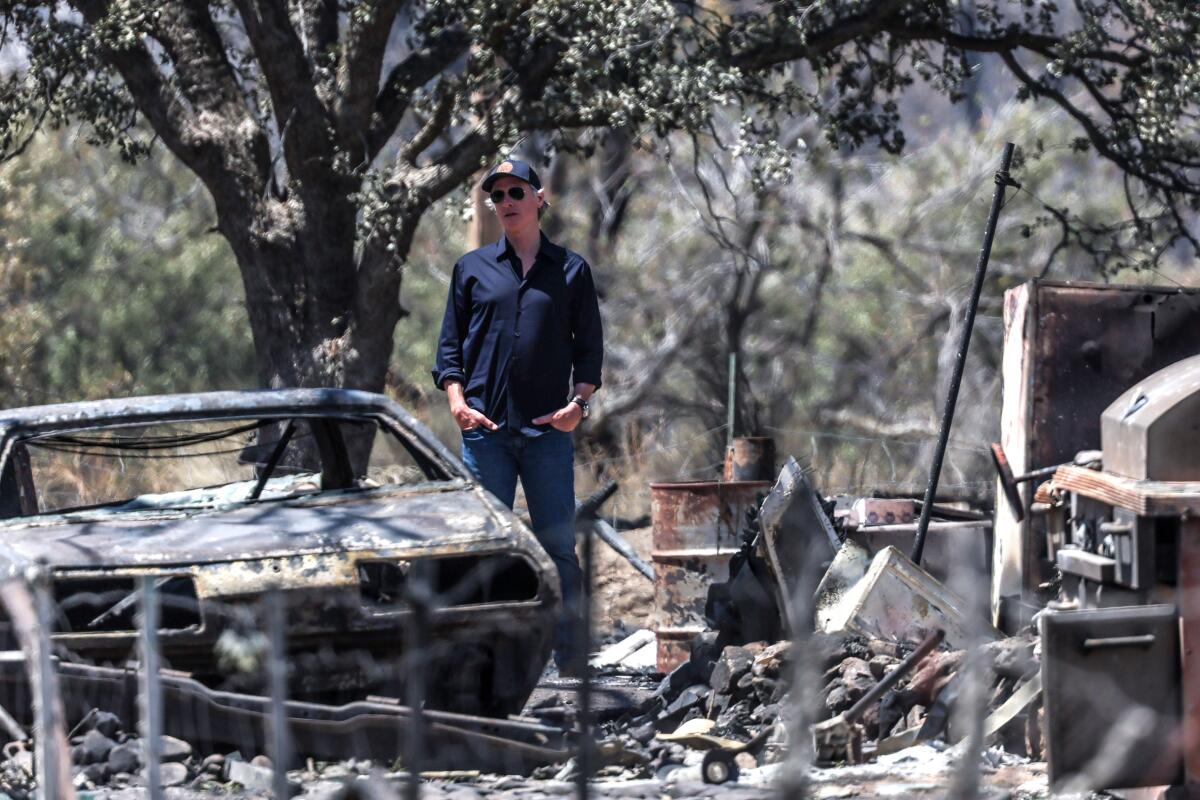
“Son of a gun. ... We didn’t really have time to get anything out.”
So said Roy Fluhart, whose ancestors homesteaded in the Havilah area around the time of the Great Depression, and who tried to preserve the Sierra Nevada town’s history. The Times’ Tony Briscoe spoke with him after the Borel fire destroyed much of the town.
Nearly 800,000 acres have burned in California in 2024 — way above the five-year average, The Times’ Hannah Fry and Jon Healey report. More than half that amount has burned in the Park fire, which, you know the drill, looks really nasty when seen from space.
Within the Park fire’s burn scar, a nonprofit research group says, about 43,000 acres “were supposed to stay intact for at least 100 years under California’s carbon offset program,” as Politico’s Blanca Begert writes. That’s a problem for California’s cap-and-trade initiative, which depends in part on corporate polluters paying to protect forests and thus keep planet-warming carbon emissions out of the atmosphere, instead of reducing their own emissions. If too many trees burn, the climate math doesn’t add up.
Because that’s not bad enough, The Times’ Ian James reports that the Park fire could devastate some of the last remaining high-quality Sacramento River tributary habitat where Chinook salmon can spawn. My colleague Grace Toohey, meanwhile, writes that several families who lost their homes in the Camp fire have now lost their homes anew in Cohasset in the Park fire. Just awful.
A planned controlled burn just across the road from the Park fire ignition point could have given firefighters time to stop the blaze from getting out of control. Alas, the controlled burn didn’t happen, per the Sacramento Bee’s Ari Plachta. Her story is a powerful reminder that we still need to spend much more time and money on wildfire prevention relative to response.
A few more fire stories:
- The best news I’ve seen from the Park fire: a daring helicopter rescue of four Rottweiler puppies. (Noah Goldberg, L.A. Times)
- More Americans are moving to hot spots for fires and floods than are moving out of those places, new data show — except in California, where people are fleeing some of the state’s most fire-prone counties. (Sarah Kaplan, Washington Post)
- Even after fires burn out, the threat of water contamination remains. (Daniel Wolfe and Aaron Steckelberg, Washington Post)
- Here’s what it’s like to visit Maui right now, a year after wildfires killed 102 people. (Christopher Reynolds, L.A. Times)
WESTERN WATER AND WILDLIFE
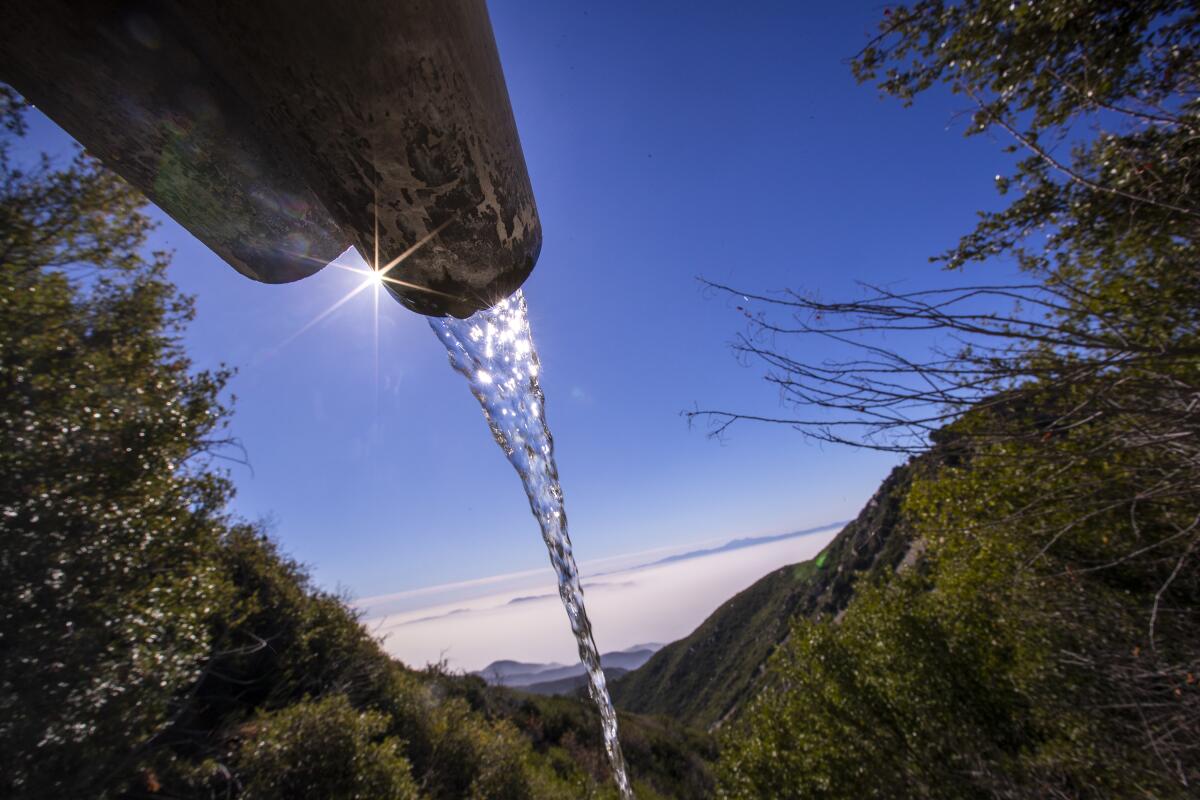
Want proof that good journalism yields results? Even if it doesn’t always happen right away?
Nine years after my L.A. Times colleague Ian James first reported that Arrowhead was bottling water from Southern California’s San Bernardino National Forest under a permit that listed 1988 as its expiration date — back when Ian and I both worked for the Desert Sun newspaper in Palm Springs — the U.S. Forest Service has ordered the water withdrawals to end. Here’s Ian’s story.
The company behind Arrowhead is suing to block the order. So the story continues.
When Ian and I were at the Desert Sun, we spent a lot of time reporting on the Salton Sea, California’s largest lake — and probably its stinkiest. But while the stench used to be limited mostly to hot summer days, it’s now year-round. That’s because the lake is shrinking, and more farm pollution is building up in the water that remains, The Times’ Jireh Deng writes.
Other waterways — and water-dependent species — face their own challenges and could benefit from their own remedies:
- Removing human-made barriers from the Arroyo Seco — an L.A. River tributary that flows out of the San Gabriel Mountains — could provide a lifeline for native trout, which are threatened by fires and climate change. (Lila Seidman, L.A. Times)
- The San Francisco Bay estuary’s longfin smelt have suffered such huge population declines that federal officials are declaring them an endangered species. Climate change and human water pumping have hurt the fish. (Ian James, L.A. Times)
- Wild horses are often an ecological menace. This time they’re chewing and crushing native vegetation planted at restoration sites along the Klamath River, where several dams are being taken down. (Kurtis Alexander, San Francisco Chronicle)
- If and when four Lower Snake River dams come down in Washington, how will Idaho farmers move wheat and other crops to overseas markets? Here’s an interesting look at one of the thorny knots of dam removal. (Kim Cross, High Country News)
A lot of the time, climate change leaves the West without enough water. Sometimes, it brings too much at once.
And although it’s not yet clear if global warming influenced the monsoon that thrashed the high desert city of Twentynine Palms, we know that the storm formed suddenly and hit hard, as The Times’ Alex Wigglesworth reports. We also know that in California’s Central Valley, big farmers typically have the money to recover after climate-fueled floods — whereas small farmers are often left devastated, with little government help, as Sarah Trent documents in a heart-wrenching story for High Country News.
Before moving on to the energy transition, let’s have some fun with animals:
- Peregrine falcons have made a remarkable comeback at Yosemite National Park, thanks to the banning of DDT and also the closing of a small number of climbing routes in the park to avoid nest disturbance. (Noah Goldberg, L.A. Times)
- The world’s largest wildlife crossing is starting to take shape over Southern California’s 101 Freeway. (Rosanna Xia, L.A. Times)
- Meet California’s real-life “Howie the Duck,” who’s on a mission to save abandoned waterfowl. (Jireh Deng, L.A. Times)
- Less fun: Lots of poisoned sea lions are being found along California’s Central Coast. (Susanne Rust, L.A. Times)
Let’s talk about some wildlife conflicts, too:
- Federal officials released a plan to maintain about 5,000 bison in Yellowstone National Park. Critics worry that so many bison will result in disease being transmitted to cattle, a fear that park officials say is unfounded. (Blair Miller, Daily Montanan)
- California wildlife officials are recommending endangered species protections — at least temporarily — for some populations of burrowing owls. Conservationists say the tiny, goofy birds are threatened by suburban sprawl. (Lila Seidman, L.A. Times)
- Is it possible to build a giant new suburban city while making room for mule deer and other critters to migrate through? Eagle Mountain, Utah — that’s the name of the city — is working with experts to find out. (Ben Goldfarb, High Country News)
THE ENERGY TRANSITION
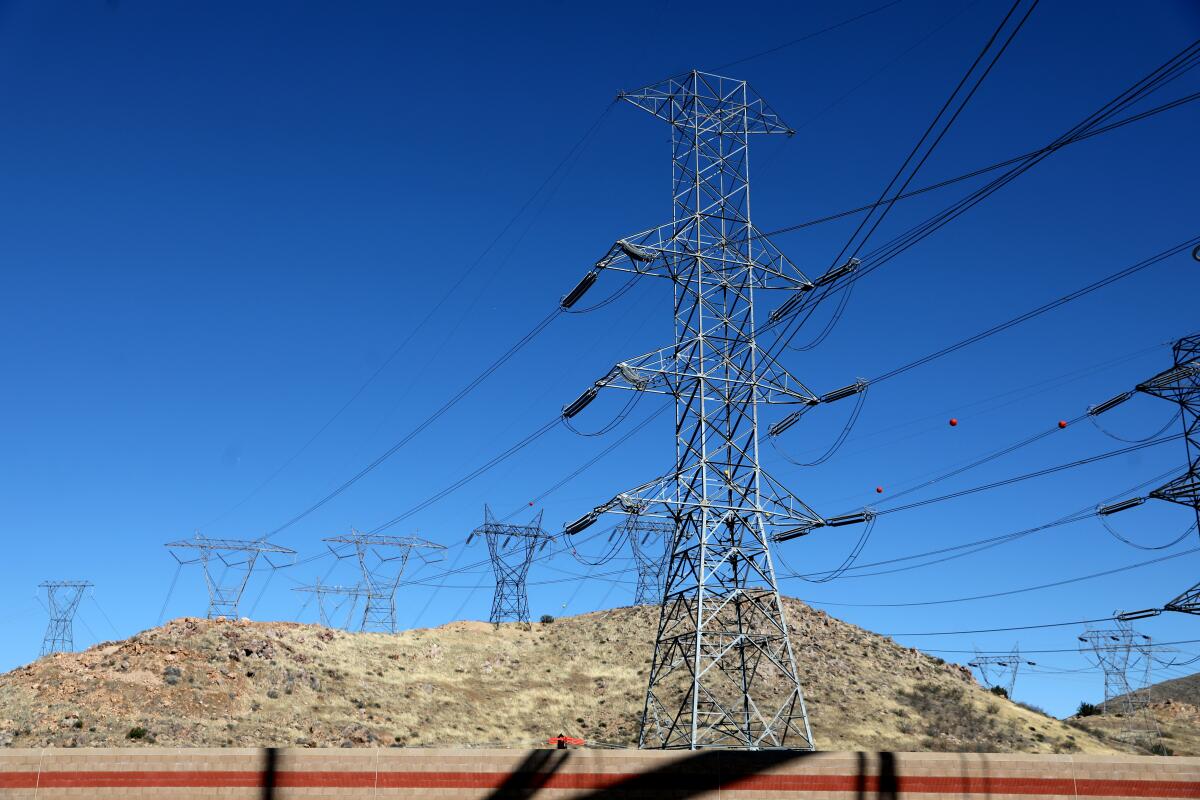
With just over three weeks remaining until the California Legislature’s 2024 session comes to an end, lawmakers and Gov. Gavin Newsom are quietly negotiating a series of bills that could help determine whether the state achieves its climate goals.
Details have started to emerge over the last week, with CalMatters’ Alejandro Lazo and Julie Cart reporting that some of the bills would speed up approval of solar and wind farms, and the Sacrameto Bee’s Ari Plachta writing that others would lower electricity bills for customers of Southern California Edison, Pacific Gas & Electric and San Diego Gas & Electric — at least a little bit.
I’m eagerly awaiting details. But conceptually, both types of legislation are badly needed, in some form.
Keeping utility bills in check is crucial for persuading people to switch to electric cars, heating and cooking. Speeding up solar and wind energy development is key, too, as long as we don’t destroy too much wildlife habitat in the process — a difficult balance.
Rooftop solar can help limit the need for large solar farms, at least a bit. But Newsom keeps undermining the technology, with his policies contributing to this week’s bankruptcy filing by rooftop solar giant SunPower, as Canary Media’s Eric Wesoff explains.
To the extent we can build renewable energy on previously disturbed lands, that’s another good alternative. One example: The Biden administration is trying to get a giant solar farm built on a former nuclear weapons production site, the Hanford site in Washington. Details here from Canary Media’s Carrie Klein. (Also check out this story by B. ‘Toastie’ Oaster for High Country News, offering a beautiful journey through the Hanford Reach, a buffer zone around the Hanford site that’s sacred to several tribes.)
To move renewable energy from where it’s generated to where it’s consumed, we’ll need more power lines. Which is why it’s nifty that the Biden administration is planning another $2.2 billion in grants to expand the nation’s grid, including lots of money for the first high-voltage, direct-current electric line to connect the West to the rest of the country, per Canary Media’s Jeff St. John.
A few other clean energy stories — or maybe not so clean, in some cases, depending on how you look at it:
- Super cool to see South Pasadena — population 27,000 — figure out that it will save money in the long run converting its Police Department’s vehicle fleet from gas to electric, and actually make the investment. (Sandra McDonald, L.A. Times)
- In Indonesia and other nations in Southeast Asia, Chinese companies dominate the electric car market with low-cost models. But their vehicles are largely blocked from the United States and Europe by tariffs. (Stephanie Yang, L.A. Times)
- Speaking of China, check out this fascinating investigation into China’s practice of buying its way into other nations’ fishing grounds around the world, fueling unsustainable — and at times potentially illegal — overfishing. (Outlaw Ocean Project)
- The Navajo Nation attempted to block the transport of uranium ore across its land, from a mine near Grand Canyon National Park to a processing plant in Utah; the company behind the transport paused its movement after intervention by Arizona Gov. Katie Hobbs. Advocates say nuclear energy — fueled by uranium — is needed for a future without fossil fuels. But critics point to a history of uranium-related water contamination and radioactive waste. (Hannah Grover, New Mexico Political Report)
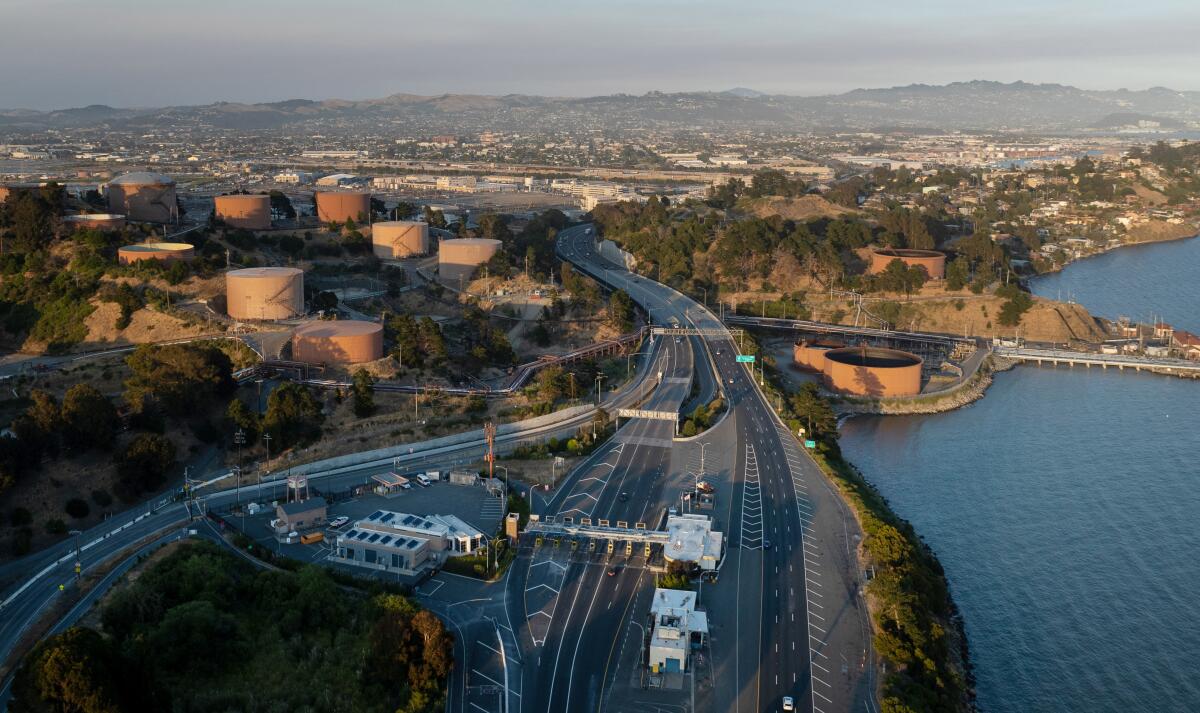
Now that we’ve done clean energy, let’s talk fossil fuels — starting with Chevron’s decision to leave California.
Well, sort of leave. The gigantic oil company, which was founded in California in 1879, announced it will move its headquarters to Houston, as The Times’ Don Lee reports. But Chevron will still operate refineries in El Segundo and Richmond, and supply more than 1,800 gas stations here. It will still pump oil here. It will still almost certainly spend heavily to influence politics here.
So we should still be wary of Chevron — and all fossil fuel companies.
We should be wary when they imply that carbon capture is the main solution to climate change — because internally, they’re not so optimistic about the technology, as Amy Westervelt shows in this excellent piece of investigative journalism for Drilled and Vox.
We should be wary when their natural gas storage fields spring record-breaking methane leaks, as Southern California Gas’ Aliso Canyon facility did in 2015 — which I mention because nearly nine years later, UCLA researchers are still collecting data to try to understand the health consequences for people living nearby, as the Los Angeles Daily News’ Olga Grigoryants reports.
And we should be wary when they fight local measures to ban natural gas in new homes and businesses — measures like Berkeley’s first-in-the-nation gas ban, which got thrown out in court after the California Restaurant Assn. filed suit.
As Berkeley seeks to recover from that courtroom setback and achieve its climate goals, its City Council voted last week to put a measure on the November ballot that, if approved, would tax hundreds of large buildings using gas — and offer up the money as no-interest and low-interest loans to help property owners convert to electricity. Details here from Berkeleyside’s Alex N. Gecan.
Last but not least, a government decision that will cut air pollution: Southern California regulators are requiring rail yard owners, including BNSF and Union Pacific, to sharply reduce lung-irritating nitrogen oxides. My colleague Tony Briscoe has the story.
For the record:
3:56 p.m. Aug. 8, 2024A previous version of this post said that U.S. Rep. Katie Porter (D-Irvine) had signed a letter urging Los Angeles Dodgers owner Mark Walter to end a sponsorship deal with Phillips 66, owner of the 76 gasoline station chain. Porter’s office said she did not sign the online petition.
This is the latest edition of Boiling Point, a newsletter about climate change and the environment in the American West. Sign up here to get in your inbox. Or open the newsletter in your web browser here.
For more climate and environment news, follow @Sammy_Roth on X.
Toward a more sustainable California
Get Boiling Point, our newsletter exploring climate change, energy and the environment, and become part of the conversation — and the solution.
You may occasionally receive promotional content from the Los Angeles Times.




